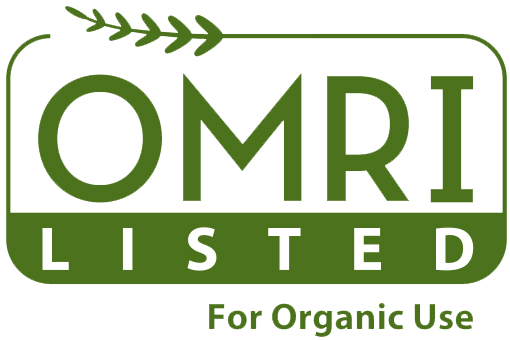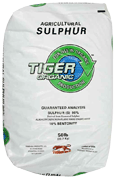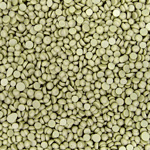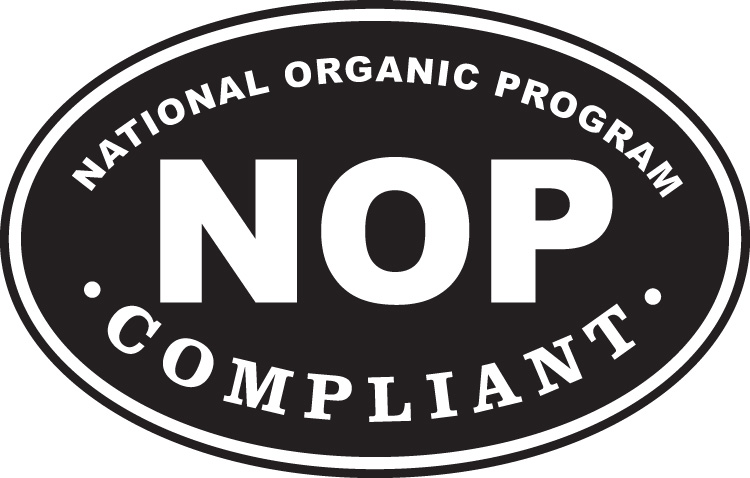
Sulfur (Granular)


Pure elemental sulfur is a vital secondary macronutrient that can be applied to deficient soils or in places where it is necessary to lower pH for acid loving plants. Sulfur is granulated for easy application through any type spreader.
LOWERING pH WITH ELEMENTAL SULFUR
| PRESENT pH | 6.50 | 6.00 | 5.50 | 5.00 | 4.50 |
|---|---|---|---|---|---|
| 8.00 | 27 | 36 | 50 | 63 | 72 |
| 7.50 | 18 | 32 | 41 | 54 | 63 |
| 7.00 | 9 | 18 | 32 | 45 | 54 |
| 6.50 | - | 9 | 23 | 36 | 41 |
| 6.00 | - | - | 9 | 23 | 32 |
NOTE:
Reduce rates by one-third for sandy soils.
Increase rates by one-half for clay soils.
Unless the application of sulfur is being thoroughly incorporated into the soil, it is not recommended that more than 20#/1000 ft2 are applied at one time.

Sulfur bacteria use sulfur as energy and create sulfate ions (SO4). Sulfate mixes with water to create sulfuric acid, which reacts with carbonates in the soil to make carbon dioxide and water. Removal of carbonates lowers pH. Soil temperature has to be above 60o for these reactions to occur because sulfur bacteria are inactive below that temperature.
Sulfur is either mined or derived from “sour crude oil”, where the sulfur is separated by a heat process, not a chemical one. A small amount of bentonite clay is added as an anti-caking agent. There is no way to tell if the sulfur is mined or derived from “sour crude oil” as they are chemically identical and we are not able to get a supply of one and not the other.
It is not recommended that granular sulfur be used on bentgrass golf course greens.
CORRECTING SULFUR DEFICIENCIES
NOTE: Most labs test for sulfate sulfur (S) and do not include in their findings the S that exists in organic matter. Typically, crops grown in soils with 5% or more organic matter do not require additional S. Moreover, applications of sulfate materials, such as sulfate of potash, gypsum, and Epsom salt, provide plant available sulfur. Sulfate of potash contains 18% S, gypsum contains 19% S, and Epsom salt contains 13% S. To convert S/acre recommendations (in the table below) to sulfate (SO4)/acre application, multiply the S needs by 3.
Recommendations in ppa S
| CROP | YIELD | VL | L | M | H | VH |
|---|---|---|---|---|---|---|
| Alfalfa-seeding | 6T | 30 | 25 | 20 | 10 | 5 |
| Alt/Clover – est. | 8T | 30 | 25 | 20 | 10 | 5 |
| Barley | 100 bu. | 20 | 15 | 10 | 5 | 0 |
| Beans (dry) | 30 bu. | 20 | 15 | 10 | 5 | 0 |
| Coastal Bermuda | 8 T | 30 | 25 | 20 | 10 | 5 |
| Corn | 140 bu. | 20 | 15 | 10 | 5 | 0 |
| Cotton | 3 bales | 25 | 20 | 15 | 10 | 5 |
| Fruit Trees | all | 15 | 10 | 6 | 0 | 0 |
| Grass-seeding | 6T | 25 | 20 | 15 | 10 | 5 |
| Grass – est. | 6T | 20 | 15 | 10 | 5 | 0 |
| Oats | 100 bu. | 20 | 15 | 10 | 5 | 0 |
| Oats/Alf. – seeding | 6T | 30 | 25 | 20 | 10 | 5 |
| Onion | 400 cwt. | 25 | 20 | 15 | 10 | 5 |
| Pasture | 6T | 20 | 15 | 10 | 5 | 0 |
| Peanut | 50 cwt. | 25 | 20 | 15 | 10 | 5 |
| Peas | 3T | 20 | 15 | 10 | 5 | 0 |
| Potato | 400 cwt. | 25 | 20 | 15 | 10 | 5 |
| Rice | 70 cwt. | 20 | 15 | 10 | 5 | 0 |
| Rye | 60 bu. | 20 | 15 | 10 | 5 | 0 |
| Soybean | 50 bu. | 20 | 15 | 10 | 5 | 0 |
| Strawberry | all | 30 | 25 | 20 | 10 | 5 |
| Sugarbeet | 25T | 25 | 20 | 15 | 10 | 5 |
| Tobacco | 30 cwt. | 25 | 20 | 10 | 5 | 0 |
| Tomato | 500 cwt. | 25 | 20 | 10 | 5 | 0 |
| Wheat | 70 bu. | 20 | 15 | 10 | 5 | 0 |
| Average | 23.4 | 18.4 | 13 | 7 | 2.2 |
OMRI LISTED™ – View OMRI Certificate
Sulfur (Granular) – View MSDS (pdf)
For more information, download the product label pdf.
 North Country Organics
North Country Organics